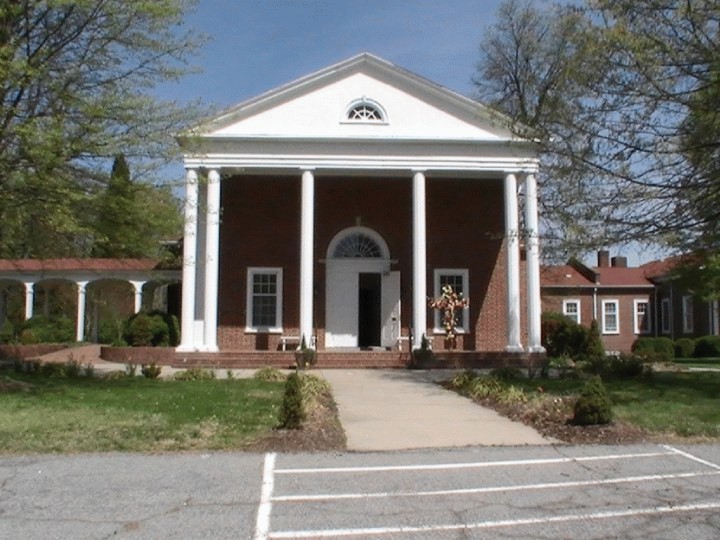Springfield worships today in the “new” meetinghouse, which was finished in 1927. We’ve been meeting here now for 96 years!
This is actually the fourth meetinghouse to serve as home to Springfield Friends. The first two were log cabin-type buildings which are long gone. The third meetinghouse is the Museum next door.
Things were changing rapidly in the 1920s. Factories, automobiles, radio and electricity were uprooting traditional family life. Springfield had to keep up with the times. We had been meeting since 1858 in the old brick meetinghouse next door, now the Museum of Old Domestic Life.

Worship in 1858 was in the traditional Quaker style, what today we call “unprogrammed.” Men sat on one side of the worship room and women sat on the other side, with ministers and elders on a facing bench. But by the1920s, women had the vote, and Friends were starting to feel that the principle of equality was established.
In 1927, Clara Cox had been our pastor for eight years. She was a powerful speaker, a forward-looking religious leader and a deeply compassionate minister. This was also the time when many Quakers in High Point were big business people – names like Tomlinson, Ragan, Cox, Blair, Mendenhall, English and Frazier dominated local industry, banking, law and education. The need and the funds were ready. The stage was set for a new building for Springfield Friends.
The meeting turned to Herbert Hunter, a rising young architect who had built up a very successful practice here in High Point. The new meetinghouse wasn’t just going to be a place of worship, but would have facilities for education and fellowship, too. There would be indoor plumbing – the old meetinghouse had an outhouse. Water would come from a well, not an open stream. There would be a coal furnace to heat the entire building. Most of all, it was going to be bright and airy.
The new building included our present worship room, the Martha Jay parlor, and a study for the pastor (now the Shoebox room). In the east wing there would be six classrooms upstairs and two more classrooms in the basement, a kitchen (under what’s now the pastor’s office), a dining room (under what’s now the copier room, the youth minister’s office, and the Memorial Association room).
The cornerstone was laid September 2, 1926, and construction was completed seven months after the first time the committee met. That must be some kind of a record for Quakers getting things done! The new meetinghouse was dedicated on May 1, 1927, and more than 1,000 people came.
The new building wound up costing $50,000 – with inflation, in today’s dollars, that would be about $750,000. David and Adelaide Blair gave the pews in memory of David’s parents. Robert Ragan, the owner of Beeson Hardware, donated more than $4,000 [about $68,000 today] worth of hardware of all kinds to the new meetinghouse. Charles and Sidney Tomlinson, owners of Tomlinson Furniture, donated the pulpit and all of the platform furniture. A mortgage was necessary to pay for the rest.

Unfortunately, just two years later, in 1929, the stock market crashed and the Great Depression began, and nobody had that kind of money to spare any more. To pay off the debt, the meeting held countless church suppers – Brunswick stew, barbecue, creamed chicken, turkey, etc. The debt was finally paid off in 1937, ten years after the meetinghouse was built.
For the Quakers who built our new home, it wasn’t just a building. It was for a house of worship, a place of prayer, a light on the hilltop, a center for community, and a refuge for all who come here seeking the help and blessing of God.
